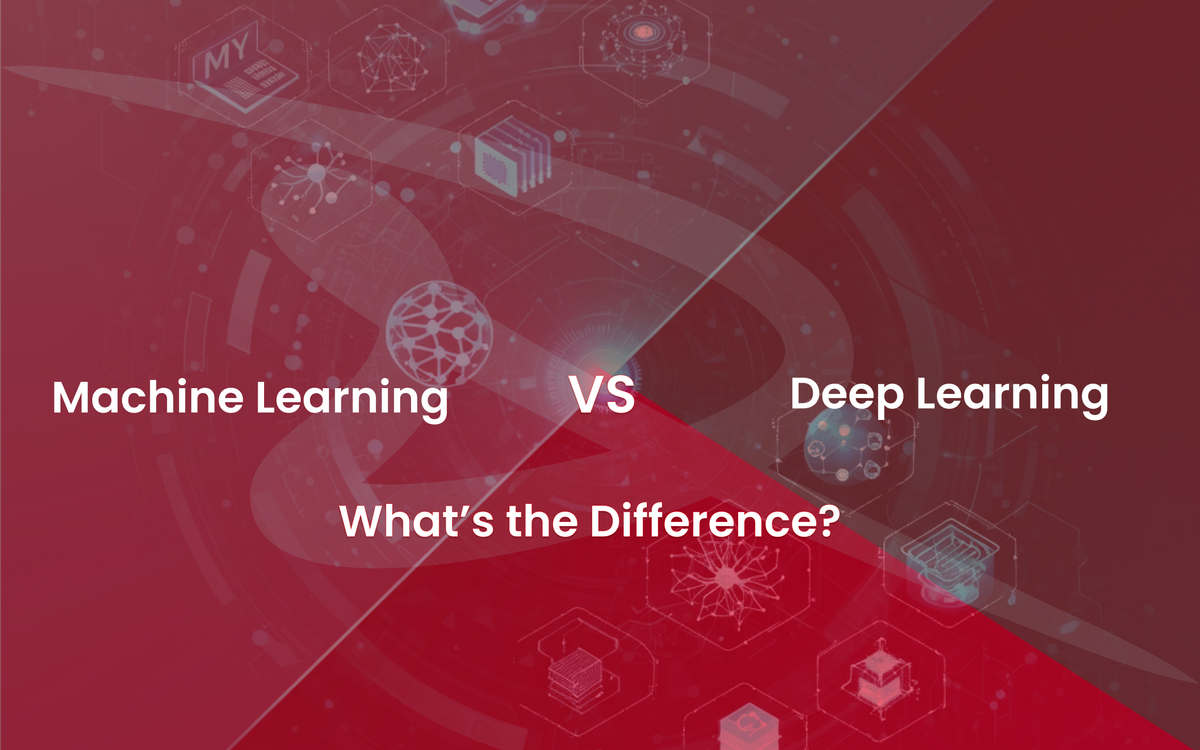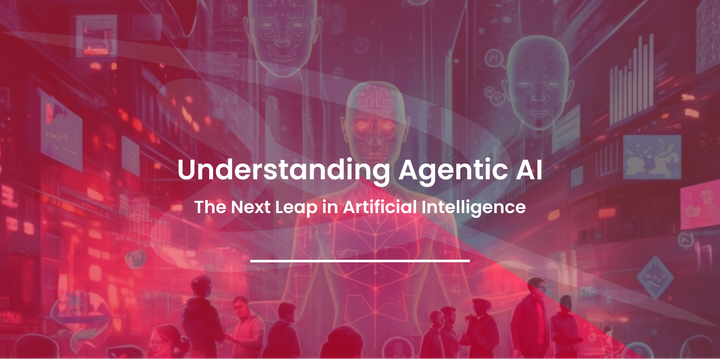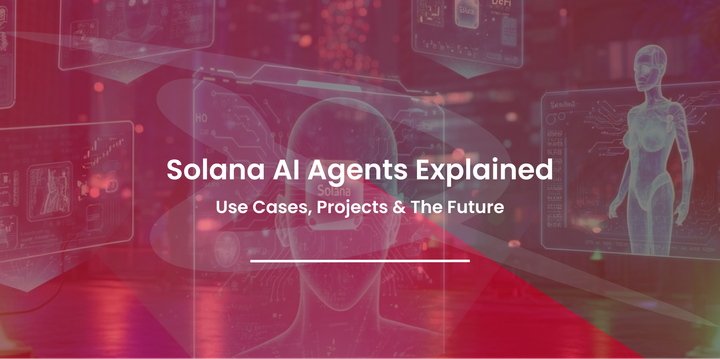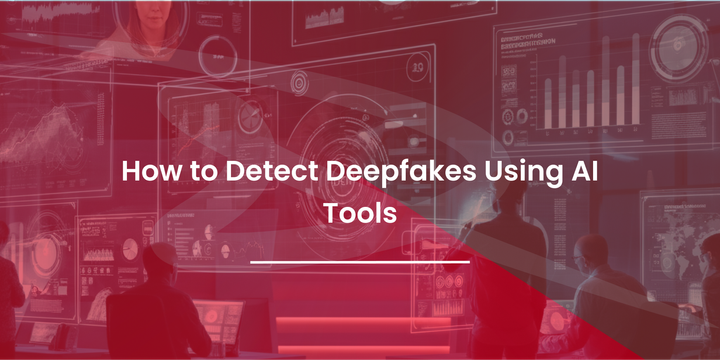Machine Learning vs Deep Learning: What’s the Difference?
Discover the differences between Machine Learning and Deep Learning, their unique use cases, and how to choose the right approach for your AI projects.

Artificial intelligence (AI) is transforming the world—on our phones, in our homes, and even on our roads. From spam filters catching pesky emails to self-driving cars navigating complex traffic, AI is at the heart of many life-changing technologies. Two of its essential subfields, Machine Learning (ML) and Deep Learning (DL), are driving these advancements forward.
But here’s where it gets tricky—these terms are often used interchangeably, even though they have distinct differences. Whether you’re a budding data scientist, a tech enthusiast, or someone starting out in machine learning, this guide will clarify the key differences between ML and DL to help you understand their roles better.
What is Machine Learning?
Machine Learning is often described as the foundation of AI. At its core, ML is about teaching computers to learn from data rather than being explicitly programmed for every task.
How Machine Learning Works
ML involves creating algorithms that use data to identify patterns and make predictions or decisions without requiring human intervention. Broadly, ML techniques fall into three categories:
- Supervised Learning
The model is trained on labeled data (i.e., input-output pairs). For example, inputting features of houses (location, size) and their prices to predict the price of another house. - Unsupervised Learning
The model works with data that isn’t labeled and tries to identify hidden structures, like grouping customers with similar buying habits (clustering). - Reinforcement Learning
The model learns by interacting with its environment and receiving feedback (rewards or penalties). Think of a robot learning to walk without falling too many times.
Real-world Applications of Machine Learning
ML has found its way into multiple industries with compelling use cases:
- Spam Filtering – Email providers utilize supervised learning to identify and block spam emails automatically.
- Fraud Detection – ML models analyze transaction patterns and flag unusual activities to reduce fraudulent activities.
- Recommendation Systems – From Netflix shows to Amazon products, ML algorithms tailor suggestions based on your preferences.
With its versatility and capability to handle structured data, ML has become the backbone of many innovative systems.
What is Deep Learning?
Deep Learning takes Machine Learning a step further, simulating the workings of the human brain with massive networks of neurons—hence the term Neural Networks. It’s a subset of ML that focuses on solving highly complex problems.
How Deep Learning Works
Deep Learning relies on Artificial Neural Networks (ANNs) to process and analyze large datasets. These networks comprise layers of "neurons" that are interconnected—allowing input data to pass through multiple layers to identify patterns far more complex than traditional ML.
For example, consider an image of a cat. A Deep Learning model can recognize the cat by analyzing the image at various layers:
- The first layer detects simple features like edges.
- The next layer identifies textures and shapes.
- Finally, the deeper layers piece together these features to recognize the animal as a cat.
Real-world Applications of Deep Learning
Deep Learning’s ability to handle vast amounts of unstructured data has fueled some of the most impressive AI technologies:
- Image Recognition – Applications like Google’s Lens or facial recognition in security systems.
- Speech-to-Text Conversion – Voice assistants like Siri and Alexa rely on DL to transcribe and interpret spoken language.
- Self-driving Cars – Companies like Tesla use DL for object detection, lane tracking, and operating autonomous vehicles.
Deep Learning thrives in areas that require understanding of unstructured or complex data, making it indispensable for advanced AI applications.
Key Differences Between Machine Learning and Deep Learning
To better understand ML and DL, here’s a breakdown of how they differ:
| Key Differences | Machine Learning (ML) | Deep Learning (DL) |
|---|---|---|
| Data Dependency | Works well with smaller datasets and structured data. | Requires large datasets for optimal performance. |
| Feature Engineering | Requires manual feature extraction by engineers. | Automatically learns features, reducing human effort. |
| Computational Power | Can run on standard CPUs. | Needs high computational power, often requiring GPUs or cloud-based solutions. |
| Training Time | Faster training, ranging from minutes to hours. | Longer training time, from days to weeks, depending on complexity. |
| Interpretability | More transparent and explainable (e.g., decision trees). | Operates as a "black box," making it harder to interpret decisions. |
When to Use Machine Learning vs. Deep Learning
Deciding whether to use ML or DL depends largely on your needs:
- Choose Machine Learning:
- When working with structured data such as spreadsheets or databases.
- For smaller datasets where collecting extensive data isn’t feasible.
- When you need simpler models that can be quickly trained and easily interpreted.
- Choose Deep Learning:
- For tasks like image and speech recognition or NLP (Natural Language Processing).
- When working with unstructured data such as videos, audio, or detailed sensor data.
- For projects where accuracy is paramount, and you have access to extensive datasets and computation resources.
The Future of Machine Learning and Deep Learning
Both Machine Learning and Deep Learning are evolving rapidly, driving AI into new, uncharted territories:
- Automation in ML
AutoML tools are reducing the complexity of developing ML models, making it more accessible.
- Advances in DL Hardware
With the rise of advanced GPUs and TPUs (Tensor Processing Units), Deep Learning will become faster and more cost-effective.
- Convergence of Technologies
The combination of reinforcement learning with Deep Learning may pave the way for “general AI,” where machines learn not just specific tasks but adapt across various domains.
Both fields will continue to play pivotal roles in industries like healthcare, finance, and transportation, shaping the way we interact with technology.
Key Takeaways for Beginners
Understanding Machine Learning and Deep Learning is the first step toward harnessing the power of AI.
- ML delivers versatility and efficiency for practical business use cases and smaller datasets.
- DL takes on the heavy-lifting for complex, highly detailed tasks.
The choice between the two lies in your goals, data availability, and computational resources. Explore how each can transform your processes, and leverage this knowledge for smarter decisions.
Ready to start developing your own AI? Try incorporating ML or DL into your projects today!
FAQs: Machine Learning vs Deep Learning
1. What is the main difference between Machine Learning and Deep Learning?
Machine Learning (ML) is a broader field that enables computers to learn patterns from data and make predictions, while Deep Learning (DL) is a subset of ML that uses neural networks to automatically learn features and solve complex problems.
2. Is Deep Learning better than Machine Learning?
Not always. Deep Learning excels in handling large datasets and complex tasks like image recognition and NLP, but Machine Learning is better for structured data and scenarios with limited computational resources.
3. Does Deep Learning require more data than Machine Learning?
Yes, Deep Learning typically requires large datasets to train effectively, while Machine Learning algorithms can work well with smaller datasets.
4. What are some real-world applications of Machine Learning?
Machine Learning is used in spam filtering, fraud detection, recommendation systems, predictive analytics, and customer segmentation.
5. Where is Deep Learning commonly used?
Deep Learning powers applications like self-driving cars, facial recognition, language translation, speech-to-text conversion, and advanced robotics.
6. Which one is easier to learn: Machine Learning or Deep Learning?
Machine Learning is generally easier to learn since it involves simpler algorithms and less computational complexity. Deep Learning requires a deeper understanding of neural networks and more computational power.
7. When should I use Machine Learning instead of Deep Learning?
Use Machine Learning when working with structured data, smaller datasets, and when interpretability is important. Deep Learning is best for complex tasks like image and speech recognition that require high accuracy.
8. Do Machine Learning and Deep Learning require different hardware?
Yes, Deep Learning models often require GPUs or TPUs due to their high computational needs, while many Machine Learning models can run on standard CPUs.
9. Can Deep Learning work without Machine Learning?
No, Deep Learning is a subset of Machine Learning. While it uses different techniques (such as neural networks), it still follows the core principles of learning from data.
10. What is the future of Machine Learning and Deep Learning?
Both fields are rapidly evolving, with advancements in AI automation, quantum computing, and explainable AI. Deep Learning is expected to improve in efficiency, while Machine Learning will continue to be widely used in various industries.




Comments ()